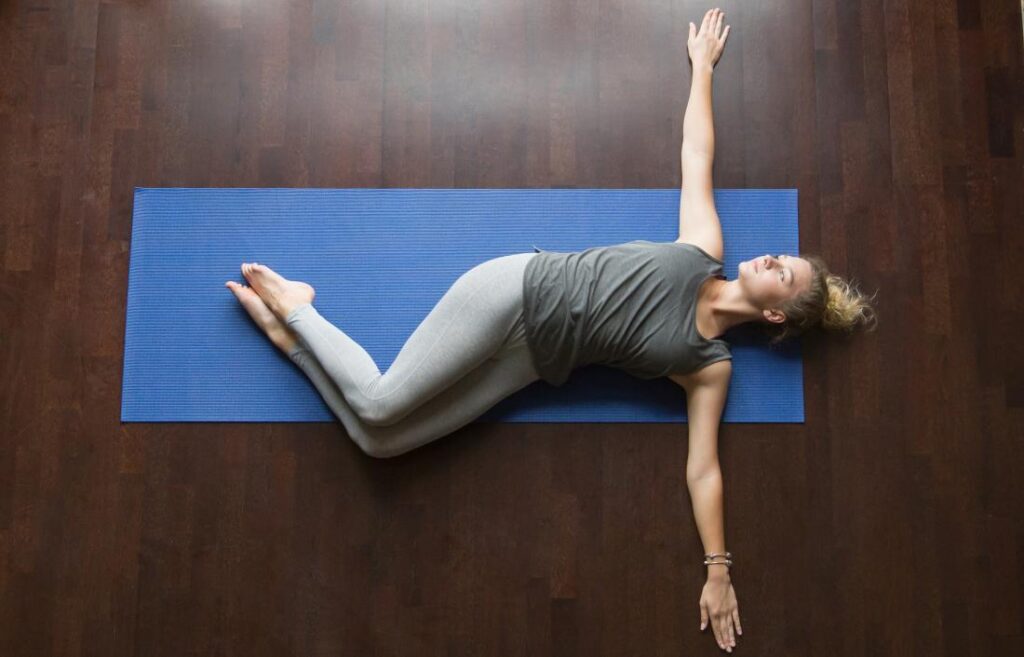In this post I discuss why I stopped stretching my clients several years ago and instead focused on resistance training.

Have you ever had an epiphany? A sudden realisation that caused you to question your present understanding of something?
That happened to me about 12 years ago. I remember exactly where I was and who I was with.
I’d been working with an amateur golfer for a number of months. She was making steady progress but every once in a while she would experience debilitating lower back pain.
This was usually preceded by tightness in her lower back and almost always occurred in the days after a golf competition.
During our Monday morning session on the day in question, my client reported tightness in her lower back. Nothing unusual as she’d been playing in a golf tournament over the weekend.
I decided to apply a gentle stretch to the muscles of her lower back. I figured we might be able prevent the issue from developing into something worse if we released the tension now.
That’s when disaster struck
Far from improving the situation, the stretch caused the very issue I was trying to avoid, a painful and debilitating back spasm.
I was mortified. Whilst apologising profusely and trying to help her up from the floor, the following words kept going through my head…
What the (bleep) are you doing?
What the (bleeping bleep) are you doing?
Yes, what exactly was I doing?
Over the next few days those words kept coming back to me, sometimes whilst I was with clients and sometimes when I wasn’t, almost always with a bleep.
Everybody makes mistakes but this one seemed different. It wasn’t a ‘sorry you’re a bit sore after our session type mistake.’ It was more fundamental.
By applying an intervention I had actually caused the very thing I was trying avoid.
This lady was coming to me to get stronger, improve her golf and reduce her pain.
She was now weaker, unable to play and in worse pain than ever.
This situation would pass but in the short term my approach was having precisely the opposite effect of the one I desired.
Where would this get us in the long term?
That got me thinking.
Training v stretching
Passive stretching is primarily used to reduce tension in the muscular system and increase range of motion.
There’s plenty of evidence to suggest it does both of these things very well.
Here’s the thing though, a well designed and executed resistance training exercise has been shown to do exactly the same thing.
So which is better?
Think about it like this, if you have the option of moving your leg into a position using either:
1) an external force such as gravity, a partner, or your body weight.
or
2) your muscular system.
Which one will be more effective?
If you could have a lasting impact on your muscular system by having somebody move you around then my guess is exercise would be more popular.
Sadly this isn’t the case. To have any real benefit you need to be the one making the effort.
Reducing risk
Another important consideration is the one that brought me to my epiphany, risk.
If your muscular system is not in control of the forces that are being applied to you, unexpected things can occur.
Of course applying an exercise that’s poorly designed or too difficult can have a negative effect.
The difference with an exercise is there’s a metric, the resistance.
If the last session caused issues, you can reduce the amount weight you’re using, or adapt the exercise further.
How do you accurately and reliably gauge the amount of force you use for a stretch?
It’s not easy.
Increasing reward
The crucial factor for me though is the potential for reward.
What happens when a stretch goes as well as it possibly can?
What happens when the same happens with an exercise?
A stretch that’s repeated over time may reduce the passive torque (force) that the stretched muscle and tendon is able to generate.
It also has the potential to shift the point in the range of motion where the muscle is able to generate the most tension. In plain English, the muscle will become weaker in certain positions.
An exercise that increases range of motion, reduces sensations of tension and perhaps even has an impact on pain can be replicated and progressed.
Over time this will lead to structural changes within the muscles concerned that will improve their ability to generate torque. Simply put, they will become stronger.
Summary
In its starkest terms here is the choice, do you want to get stronger or weaker?
And which one do you think will help you do the things you enjoy in life?
Exactly.